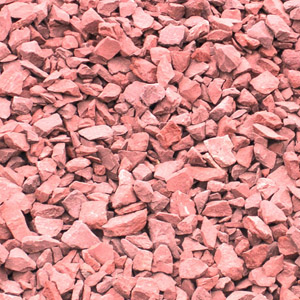Large red rocks are popular options for landscaping as they add a dramatic touch to the overall look of a garden or outdoor space. They are versatile and can be used in various ways, making them an attractive choice for homeowners and landscapers alike.
Benefits of Large Red Rocks
There are many benefits to using large red rocks in landscaping, including:
- Aesthetics: As mentioned, large red rocks add a bold and eye-catching element to any outdoor space. They can make a statement on their own or be used as focal points in a larger landscape design.
- Durability: Red rocks are known for their durability and longevity. They are resistant to weathering and erosion, making them a low-maintenance option for landscaping.
- Natural look: Red rocks have a natural, earthy feel to them that can enhance the overall look of a garden or outdoor space. They can also be used to create a more rustic or desert-inspired theme.
- Versatility: Large red rocks come in various sizes and shapes, allowing for creative use in landscaping. They can be stacked on top of each other to create walls or borders, used as stepping stones, or simply scattered throughout a garden for visual interest.
- Low maintenance: Red rocks require minimal upkeep compared to other landscaping materials. They do not need to be watered, mowed, or trimmed, making them an attractive option for those with busy schedules.
How to Incorporate Large Red Rocks into Landscaping
There are several ways to incorporate large red rocks into landscaping. Here are a few ideas:
- Rock garden: Create a rock garden by arranging large red rocks in different shapes and sizes. This can be done on its own or alongside plants and flowers for contrast.
- Water feature: Large red rocks can be used to create a natural-looking water feature, such as a small waterfall or stream. The rocks can be stacked to create a cascading effect, and the water can flow over them for a soothing sound.
- Pathway: Use large red rocks as stepping stones to create a pathway through your garden or yard. This is not only practical but also adds visual interest to the space.
- Focal point: As mentioned, large red rocks can be a focal point in a garden or outdoor space. Place one or several strategically to draw the eye and create a unique feature.
- Natural wall: Use large red rocks to create a natural-looking wall or border around your garden or yard. The rocks can be stacked on top of each other and secured with mortar for stability.
Tips for Using Large Red Rocks in Landscaping
- Choose the right size: When selecting large red rocks for landscaping, consider the size of your space and the scale of the rocks. You don’t want them to overpower or look out of place.
- Consider placement: Think about where you want to place the rocks and how they will interact with other elements in your landscape. This can help create balance and a cohesive design.
- Mix with other materials: Large red rocks can be used in conjunction with other materials, such as gravel, mulch, or plants. Experiment with different combinations to achieve the desired look.
- Create texture: Use large red rocks of different shapes and textures to add dimension and interest to your landscaping. This can break up the monotony of a flat or uniform space.
- Use for erosion control: The weight and stability of large red rocks make them useful for preventing erosion on slopes or in areas prone to heavy rainfall. They can also help retain moisture and protect plants from wind damage.
- Maintenance: While large red rocks are generally low maintenance, it’s important to periodically check for any shifting or settling. They may also need to be cleaned of debris or weeds that can grow between the rocks.
- Safety: When using large red rocks in your landscaping, be sure to secure them properly with mortar or other materials to prevent them from shifting or falling and causing injury.
- Local sourcing: Consider sourcing your large red rocks from a local quarry or supplier. This not only supports local businesses, but can also help reduce the environmental impact of long-distance transportation.
- Versatility: Large red rocks can be used in a variety of ways, from creating a focal point to lining pathways or defining borders. Be creative and think outside the box when incorporating them into your landscape design.
- Consider the climate: When choosing large red rocks for your landscaping, keep in mind the climate and weather conditions in your area. Certain types of rocks may be more prone to cracking or weathering in extreme temperatures.
- Incorporate plants: Large red rocks can provide a beautiful backdrop for plants and greenery. Consider incorporating them into your garden beds or using them as a base for potted plants.
When used effectively, large red rocks can add both visual appeal and practical function to your landscaping. Experiment with different sizes, shapes, and placement to create a unique and eye-catching design. Don’t be afraid to mix in other types of rocks or materials for added texture and contrast.

